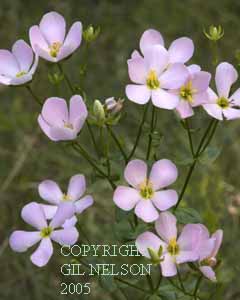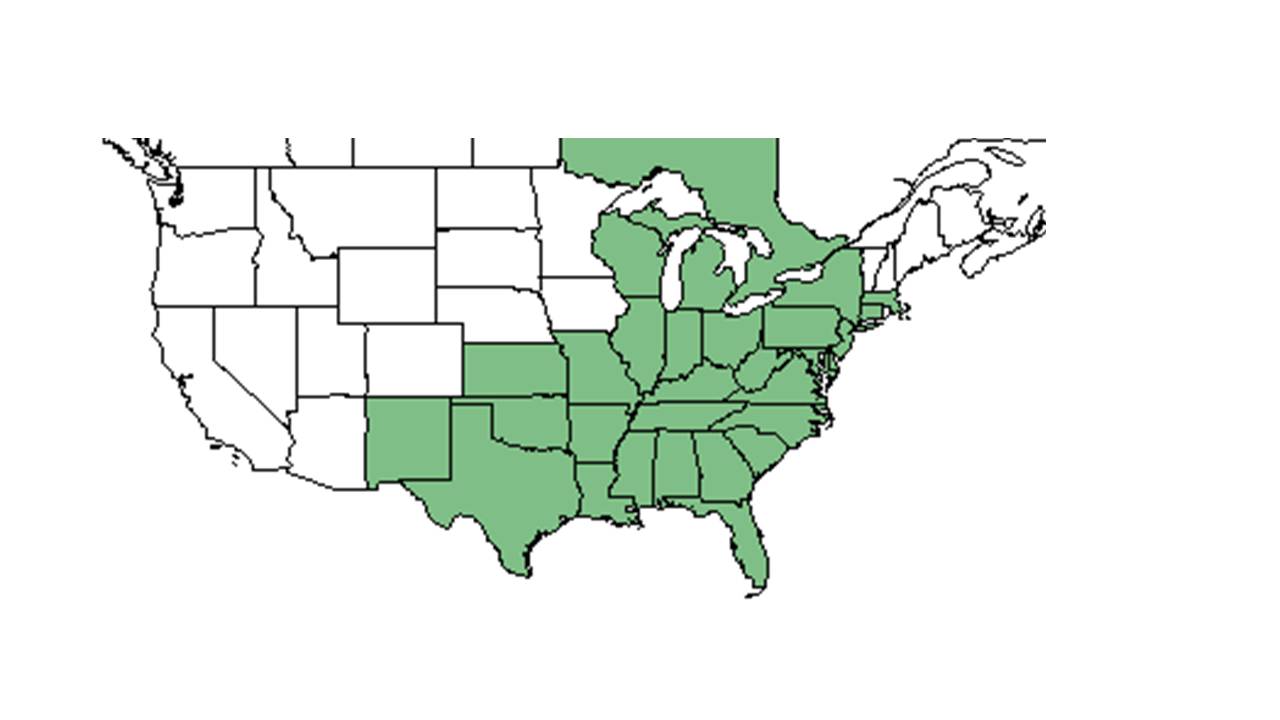Difference between revisions of "Sabatia angularis"
| Line 17: | Line 17: | ||
| range_map_caption = Natural range of ''Sabatia angularis'' from USDA NRCS [http://www.plants.usda.gov Plants Database]. | | range_map_caption = Natural range of ''Sabatia angularis'' from USDA NRCS [http://www.plants.usda.gov Plants Database]. | ||
}} | }} | ||
| + | |||
| + | Common names: Bitter-bloom, Common Marshpink, or Rosepink (Nelson 2006). | ||
==Description== | ==Description== | ||
<!-- Basic life history facts such as annual/perrenial, monoecious/dioecious, root morphology, seed type, etc. --> | <!-- Basic life history facts such as annual/perrenial, monoecious/dioecious, root morphology, seed type, etc. --> | ||
| − | + | ||
==Distribution== | ==Distribution== | ||
Revision as of 15:03, 12 August 2015
| Sabatia angularis | |
|---|---|

| |
| Photo taken by Gil Nelson | |
| Scientific classification | |
| Kingdom: | Plantae |
| Division: | Magnoliophyta – Flowering plants |
| Class: | Magnoliopsida – Dicotyledons |
| Order: | Gentianales |
| Family: | Gentianaceae |
| Genus: | Sabatia |
| Species: | S. angularis |
| Binomial name | |
| Sabatia angularis (L.) Pursh | |

| |
| Natural range of Sabatia angularis from USDA NRCS Plants Database. | |
Common names: Bitter-bloom, Common Marshpink, or Rosepink (Nelson 2006).
Contents
Description
Distribution
It is found in upland forests, forest edges, glades, and meadows. It is mostly an upland species, but sometimes will be seen along the edges of upland streams (Nelson 2006).
Ecology
Habitat
Phenology
It blooms from July to August (Nelson 2006).
Seed dispersal
Seed bank and germination
Fire ecology
Pollination
Use by animals
Diseases and parasites
Conservation and Management
Cultivation and restoration
Photo Gallery
References and notes
Nelson, Gil. Atlantic Coastal Plain Wildflowers: A Field Guide to the Wildflowers of the Coastal Regions of Virginia, North Carolina, South Carolina, Georgia, and Northeastern Florida. Guilford, CT: FalconGuide, 2006. 86. Print.